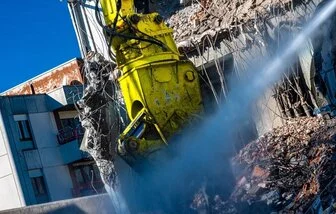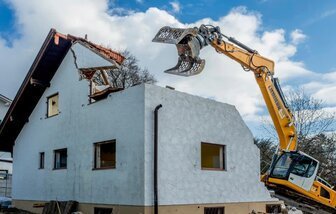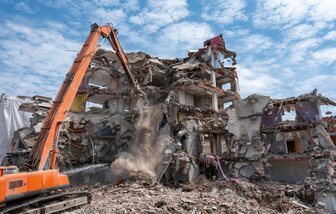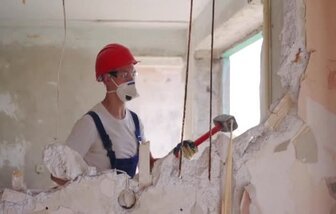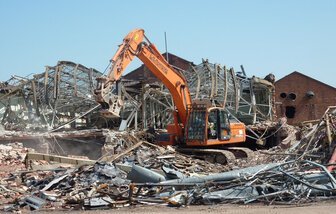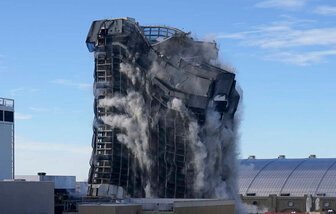Understanding Controlled Demolition and Its Methods
Controlled demolition is a precise and strategic process used to safely and efficiently dismantle structures. Learn about the methods of controlled demolition, such as implosion, selective demolition, high-reach arm excavators, wire sawing, and hydraulic breakers. Find out how these techniques are employed to bring down buildings while minimizing damage to the surrounding environment.
All you need to know about Controlled Demolition
Controlled demolition is a precise and strategic process used to safely and efficiently dismantle structures.
It involves the use of various methods and techniques to bring down buildings or other structures while minimizing damage to the surrounding environment. In this blog post.
We will explore what controlled demolition is and delve into some of the common methods employed in this practice.
Controlled demolition is a specialized process that requires careful planning, expertise, and adherence to safety protocols. By employing various methods such as implosion, selective demolition, high-reach arm excavators, wire sawing, and hydraulic breakers, professionals can safely and efficiently dismantle structures while minimizing damage to the surrounding environment.
The choice of method depends on the specific requirements of the project and the desired outcome. Through controlled demolition, structures can be safely removed, making way for new developments or repurposing existing spaces.

Controlled demolition is the systematic dismantling of structures, such as buildings, bridges, or towers, using specialized techniques and equipment. Unlike traditional demolition, which often involves the use of explosives, controlled demolition focuses on precision and safety, ensuring that the structure is brought down in a controlled manner.
Controlled demolition is typically carried out by trained professionals who meticulously plan the process to minimize risks and potential hazards. It requires a thorough understanding of the structure’s design, materials, and surrounding environment.
There are several methods commonly used in controlled demolition. The choice of method depends on various factors, including the type of structure, its location, and the desired outcome. Let’s explore some of the most frequently employed methods:
1. Implosion
Implosion is a method often associated with controlled demolition. It involves strategically placing explosives at key structural points within the building. When detonated, the explosives cause the structure to collapse inward, reducing the risk of damage to surrounding structures. Implosion requires careful planning and precise timing to ensure a successful and safe demolition.
2. Selective Demolition
Selective demolition is the process of dismantling specific areas or components of a structure while preserving other parts. This method is commonly used when the surrounding environment needs to be protected, or when certain elements of the structure are to be repurposed or salvaged. It requires skilled workers who can carefully remove designated sections while ensuring the structural integrity of the remaining parts.
3. High-Reach Arm Excavators
High-reach arm excavators, also known as long-reach excavators, are used in controlled demolition to dismantle structures from a safe distance. These specialized machines have extended arms that can reach great heights and allow for precise demolition. High-reach arm excavators are particularly useful when demolishing tall buildings or structures located in congested areas.
4. Wire Sawing
Wire sawing is a technique used to cut through reinforced concrete or other dense materials. It involves using a wire embedded with diamond beads to create precise cuts. Wire sawing is often employed in situations where traditional cutting methods are not feasible or practical. It allows for controlled and efficient removal of sections of a structure without causing excessive vibrations or noise.
5. Hydraulic Breakers
Hydraulic breakers, also known as concrete breakers or hammers, are powerful tools used to demolish concrete and other hard materials. These breakers use hydraulic power to deliver high-impact blows, effectively breaking down the structure. Hydraulic breakers are often used in conjunction with other methods to facilitate the controlled demolition of buildings or concrete structures.
What is demolition?
The process involves Rotational hydraulic shears and rock-beakers attached to specialist excavators are also used to cut or break through wood, cut steel and crush concrete which reduces the structure to a rubble
What is a premature collapse?
TPremature collapse of these structures is one of the main causes of serious injuries resulting from demolition activities. The most common type of incidents is the lack of planning before commencement
Demolition hazards
If a demolition project is well planned the risks of injury and death can be minimised. It should be emphasised that the planning and execution of a demolition project should only be done by appropriately competent persons.
What is a section 80 demolition notice?
If your considering demolishing an existing building you will need to submit a demolition, Section 80 Notice together with your (RAMS) to your local authority according to section 80
What is a pre-demolition survey
When a building is to be demolished the (non-domestic) client (usually the property owner) has a duty to provide pre-demolition information to the designer and contractor. This will involve a pre-demolition investigation and survey.
How to manage asbestos in demolition
One of the key issues arising in demolition these days is asbestos. Widely used in construction projects by previous generations, asbestos is now accepted as the UK’s largest occupational killer and there are strict guidelines for the safe removal
How to manage your demolition project
Where any redundant building, structure plant has contaminated flammable materials, precautions must be observed to avoid fires and explosions. Specialist advice must be required to identify any residual
What is manual demolition?
Among the methods, manual demolition is found to be most applicable for most sites, especially for areas located in the urban zone. The safety of the demolition process would greatly depend on the type of procedure used.
What is non explosive demolition?
You do not need explosives for every demolition job. Most people assume that for a demolition to be a demolition there is a need for a kaboom. It does not have to be that way
Structural demolition
Structural demolition is not a walk in the park. Total Group is well placed to deliver a safe, environmentally friendly and a budget wise project. We focus on a process that will assist you to salvage and recycle material for reuse.
What is high risk demolition?
The building contractor needs to make a thorough risk assessment to look for both risks and hazards. Control measures are then implemented to prevent any accident that could be fatal.
Controlled demolition methods
If you have a large building that requires demolishing, you cannot rely solely on manual demolition to get the project completed. There is only so much that a team of demolition contractors.
Ready to start your project ?
Let's Work Together
Please complete the form below and someone from the Total team will be in touch.

